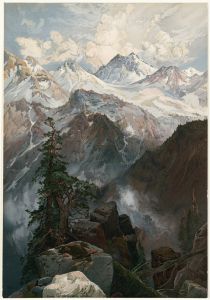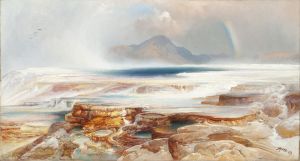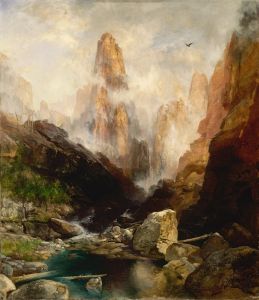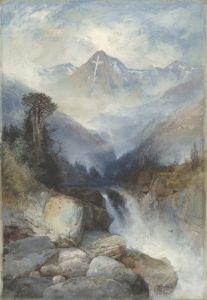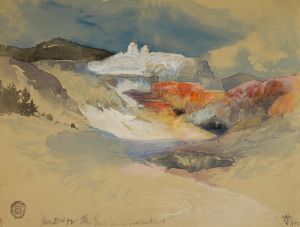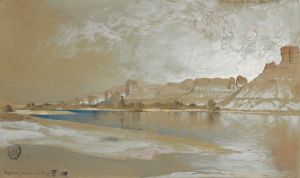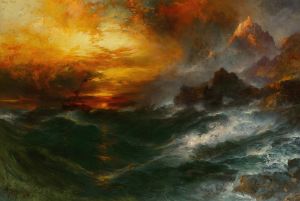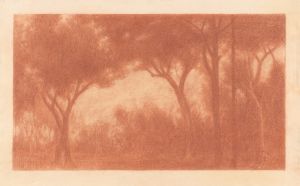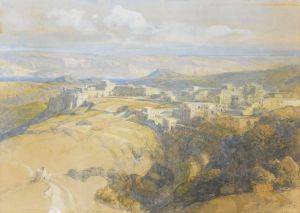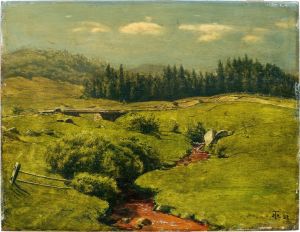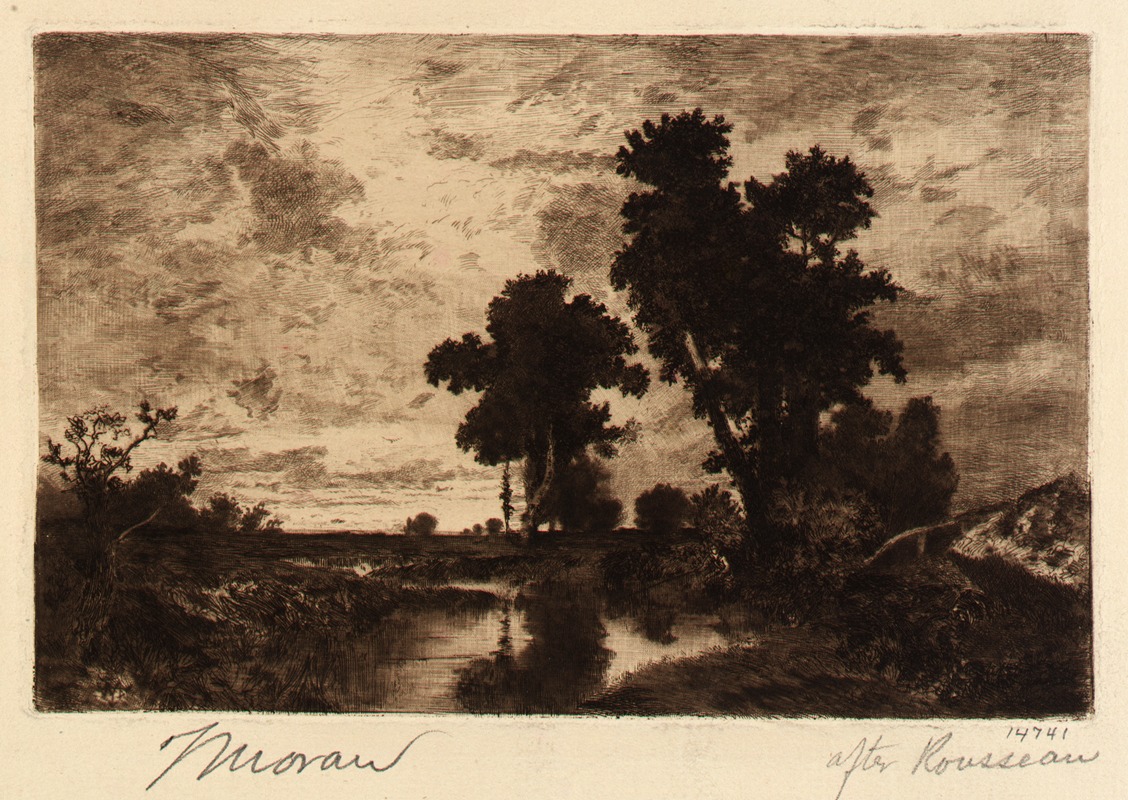
Landscape
A hand-painted replica of Thomas Moran’s masterpiece Landscape, meticulously crafted by professional artists to capture the true essence of the original. Each piece is created with museum-quality canvas and rare mineral pigments, carefully painted by experienced artists with delicate brushstrokes and rich, layered colors to perfectly recreate the texture of the original artwork. Unlike machine-printed reproductions, this hand-painted version brings the painting to life, infused with the artist’s emotions and skill in every stroke. Whether for personal collection or home decoration, it instantly elevates the artistic atmosphere of any space.
Thomas Moran (1837-1926) was an American painter and printmaker of the Hudson River School in New York whose work often featured the Rocky Mountains. Moran is best known for his depictions of the American West, particularly Yellowstone National Park, which played a significant role in the establishment of the park as the first national park in the United States.
One of Moran's notable works is "Landscape," which showcases his masterful use of color and light to capture the grandeur of the American wilderness. While specific details about the painting "Landscape" by Thomas Moran are limited, it is consistent with his style and thematic focus. Moran's landscapes are characterized by their dramatic compositions, vivid colors, and meticulous attention to detail, which together evoke the sublime beauty of the natural world.
Moran's journey to the American West began in 1871 when he joined the Hayden Geological Survey of 1871, led by Dr. Ferdinand V. Hayden. This expedition to Yellowstone was pivotal for Moran's career and for the conservation movement in the United States. The sketches and watercolors Moran created during this trip were instrumental in convincing Congress to establish Yellowstone as the first national park in 1872. His painting "The Grand Canyon of the Yellowstone" is one of his most famous works from this period and exemplifies his ability to capture the vastness and majesty of the landscape.
Moran's technique often involved the use of oil paints, which allowed him to create rich, textured surfaces and vibrant hues. He was influenced by the works of J.M.W. Turner, the British landscape painter known for his expressive colorization and imaginative landscapes. Moran's adaptation of Turner's techniques can be seen in his use of light and atmospheric effects to enhance the emotional impact of his scenes.
Throughout his career, Moran continued to explore and paint the American West, producing a prolific body of work that includes scenes from the Grand Canyon, the Colorado River, and other iconic landscapes. His paintings were not only artistic achievements but also served as visual documentation of the American frontier during a time of rapid expansion and change.
Moran's contributions to American art and the conservation movement were recognized during his lifetime, and his works are held in high regard today. His paintings are part of the collections of major institutions such as the Smithsonian American Art Museum, the National Gallery of Art, and the Gilcrease Museum. Moran's legacy endures as a testament to the power of art to inspire and preserve the natural beauty of the world.
In summary, while specific information about the painting "Landscape" by Thomas Moran is limited, it is representative of his broader body of work that captures the awe-inspiring beauty of the American wilderness. Moran's artistry and dedication to depicting the natural world have left an indelible mark on American art and the conservation movement.





